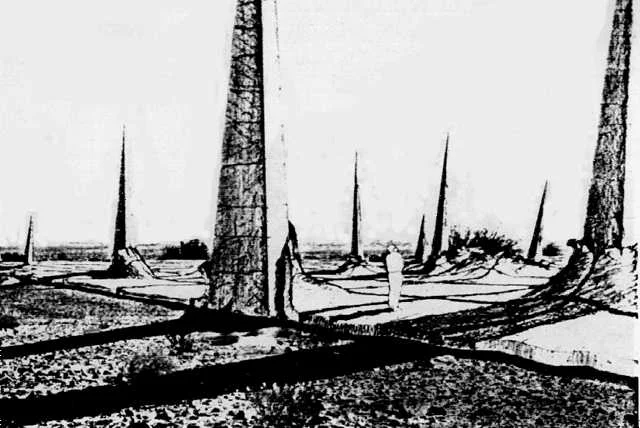10,000 Years of Warning and Ray Cats
In 1990 a task force was brought together to solve the problem labelling nuclear waste so that people who happen upon it don't accidentally kill themselves. Due to the long half life of uranium they wanted something that would still be understood by humans for at least 10,000 years, but this proved surprisingly hard to do. The site which was called the WIPP, the Waste Isolation Pilot Plant, was based in a salt mine in New Mexico and it still houses all of the nuclear waste from across the USA. The commission contained geologists, linguists, artists and even a science fiction writer. Most of the team responsible for the golden record spaceship project were also involved including Carl Sagan and everyone was split into two groups to try to brainstorm a workable solution.
The first thing to be thrown out was anything based on language. A language usually grows incomprehensible over the course of about 1,000 years barring some languages which are used for religious texts such as Latin, which has managed to remain mostly intact for perhaps twice that. Like the nuclear waste they were meant to be guarding, languages also have a half life. This is nowhere near the 10,000 lifespan needed and it illustrates nicely just how big the gulf of time, which is twice as far into the future as the start of civilisation is in the past, really is. There are no words that survive that long and even known people's names have lasted only a few millenia.
Carl Sagan thought that there was an obvious solution and he suggested a Skull and Crossbones. However this is a good example of why symbols are generally not good choices for this sort of project. They first appeared in medieval paintings where a skull and two bones arranged as a crucifix where present at Jesus's feet in many crucifixion scenes. They represented Adam and through him had a message of resurrection and rebirth. Later on it it was associated with pirates and danger in general after Captain Calico Jack Rackham was caught using it by the British and from that point many pirates adopted what is now known as the Jolly Roger. This image of danger was cemented by its association with the SS. In the last 40 years or so the skull and crossbones has been reappropriated as piratey but fun. If you pick a random object with it on today you are more likely to have a harmless child's toy that a dangerous object; it has been normalised. In short, symbols change their meaning over time and culture.
Having panels telling the warning in a story board style seemed a possible way to go. You can imagine having a picture of a person opening a barrel of waste, then a picture of them dead. Interestingly arrows and stick figures seem to be universal and can be found even in cave paintings so this plan is kind of workable. However the commission couldn't find a sensible material to make these story boards out of. Most things including rock erodes on that time scale and anything made out of metal would have a very non zero chance of being recycled for another use at some point. Just look at the plundering and grave robbing that has happened over the life time of the pyramids. This was a similar problem to the one that the designers of the Clock of the Long Now, by the Long Now Foundation, but that is a story for another time.
One artist named Mike Brill suggested shaping the surrounding landscape into spikes to give a threatening appearance to the site. This was put to rest as an idea by others on the task force as they pointed out that the reaction of most humans, on seeing something weird in the distance is to walk towards it. However the concept art is brilliant:
So far all of these seem like plans that wouldn't work. The commission ended up without having a full proof plan to what sounds like such a simple problem at first. In the end the site ended up just using a combination of lots of languages and some symbols that are recognisable today. However there was one proposal which was so outlandish that whenever people write about this topic they always include it.
Two philosophers Bastide and Fabbri realised that more enduring than language is culture. Concepts can be passed between the generations in a way that naturally adapts to whichever form the language is in. Two more enduring things are DNA as it passed down in a gene pool and the fact that humans like having cats around. If we genetically modify cats so that they start to glow when they are in the presence of high levels of radiation then we can spread a story that you should run away whenever you see a cat light up. This would become myth like, almost as a proverb, but if it could be passed on through nursery rhymes and old wives tales then it could be preserved.
One musician named EmporerX made an example songs about these so called Ray Cats and it is amusing, catchy and thought provoking:
The specific words don't matter, they will change with time. All that matters is that the message that glowing cats means danger remains somewhere buried in the culture.
If you like this sort of thing I based this article on an episode of the podcast 99 Percent Invisible. I've referenced it before on this website and it has the best audio quality and content density of any podcast I have heard.








